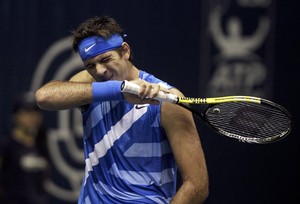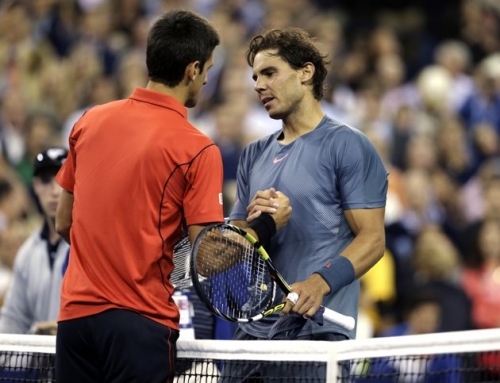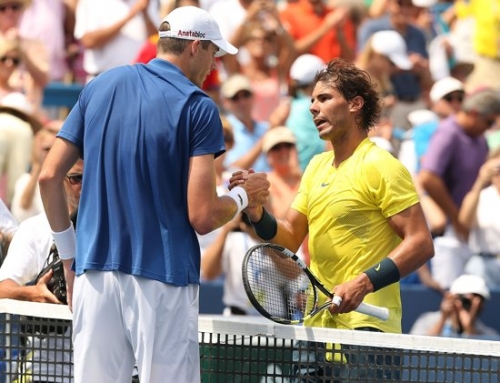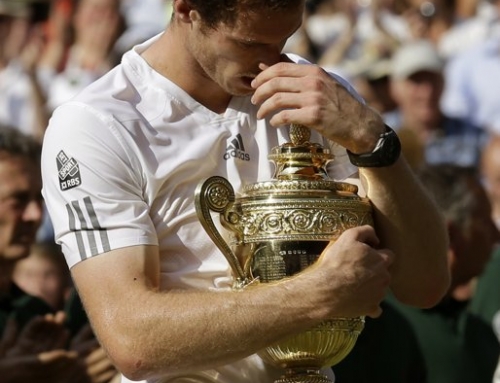 Prognosticators always like to make predictions about what the future holds. Who will win the various Slams? They guess months before it happens. It’s fun, but hardly realistic. You just don’t know. A player can be an injury away from not having any sort of year at all.
Prognosticators always like to make predictions about what the future holds. Who will win the various Slams? They guess months before it happens. It’s fun, but hardly realistic. You just don’t know. A player can be an injury away from not having any sort of year at all.
Two prominent players who had a very good year in 2009 fell to the injury bug in 2010. Most notable was Juan Martin del Potro who only played one tournament for most of the year (the Australian Open), then played two more tournaments, losing in the first round in both cases. It was rather amazing that until about September or so, he kept in the top 10, primarily due to his US Open win and being a finalist in the ATP World Tour Finals. That kept his ranking up for a long, long time.
No one knows if he can “bounce back” just like that.
Consider Nikolay Davydenko. He had been having the best few months of his life at the end of 2009. He won the ATP World Tour Finals and had a good shot at beating Roger Federer at the Australian Open. At Indian Wells, he discovered he broke his left wrist, and took a few months off, until just before Wimbledon to return. He lost confidence and ended up dropping out of the top 10, his entire year basically a wash. He did improve some as the year went along, but not enough to show he was ready to reclaim the top spots in tennis.
Although both Murray and Djokovic made the finals of a Slam (Murray for the second time, Djokovic for the third), they both had rather indifferent years. Both played much better as the US Open rolled around, but up until Wimbledon, the two had one title between them (Dubai for Djokovic). Both had better years (though not better Slam results) last year. Murray went into some funk and Djokovic also had a weird funk too. In a way, Djokovic is like the anti-Nadal. Nadal typically starts the year off well and fades as he heads into the US Open and after. Nadal did a little better this year than last in the fall, but still had his best performance mostly in the first half of the year.
Djokovic struggled with his health for the first half of the year. The heat was an issue again, as he lost to Tsonga in the quarters, then also lost to Melzer in the quarters of the French, before reaching the semis of Wimbledon and the finals of the US Open. Djokovic almost always plays well from the US Open til the end of the year.
This was supposed to be the year Cilic made a move, and yet, he didn’t. He did pretty well at the Australian Open and reached the semifinals, but then he played indifferent the rest of the year. Berdych had a surprising month when he reached the semis of the French and the finals of Wimbledon. He appeared to have zoned for a month, but then his erratic game came back and he was losing to players that he should not lose to. His game is flatter than most, and so he’s more error-prone than his competitors.
Mikhail Youzhny and David Ferrer had good years in 2010. Fernando Verdasco had a good clay court season, but played too much and had a poor French Open and then was not the same player the rest of the year. Melzer was able to come back and have a solid run this late in his career. Indeed, in a way, his performance is almost shocking. He’s 29 years old, has been playing a while, and all of a sudden, he’s on the verge of the top 10? Who would have guessed that? It’s just that he’s the least conspicuous near top ten player ever. Mardy Fish might be the closest player to do something similar, and yet Melzer’s performance is that much better.
Given how hard it is to predict the future, obviously, picking the players that have done the best, Federer and Nadal, is a bit of a no-brainer, but beyond that, it’s hard to say.
Clearly, Murray and Djokovic have been waiting in the wings for a while, and yet, they have yet to make solid breakthroughs. They keep it tough for Fed and Nadal, but Djokovic has yet to consistently beat Federer. Federer seems to have a small edge over Djokovic now. Murray tried to add more brawn to his game, but he trots this game out sporadically. For a long time, he could use his steadiness and defensive prowess to beat an inconsistent Federer. However, lately, he’s tried attacking Federer and had better success, except on days where his own consistency is a problem (see round robin in ATP World Tour Finals).
Nadal stepped it up some this year as well. He played more aggressive tennis than he has in the past, and for a tournament (the US Open) his serve came to life and he served bombs, though that motion seems to have disappeared, possibly the result of an injury.
And, who knows? Every year a new player seems to come on the scenes and make himself relevant. One year, it was Djokovic, then it was del Potro and Tsonga. Then, there was Soderling. Could another player make a jump? Melzer is now 11 in the world, but at 29, it’s hard to believe he can sustain this more than a year. How about Golubev? There’s no player that’s 19 that looks like they’ll make a leap. The new young players are in their early 20s like Golubev.
How about the Americans? Sam Querrey, John Isner, and Mardy Fish didn’t have much of an impact after the US Open. They played their best tennis earlier in the year. Will they be able to make a move? What about some of the young players like Jack Sock, Ryan Harrison, and Denis Kudla? They appear to need more work to elevate their games. Querrey and Isner made huge leaps because the serve is still one of the quickest ways to get to the top. Have a big serve, and a reasonably powerful forehand, and you can ride that to the top 50.
One has to imagine that in the next 3-4 years, a new crop of players will come up and get ready to challenge Nadal, Djokovic, and Murray just as those 3 rose to challenge Federer, Roddick, Safin, and Hewitt (2 of which have faded or retired).
And what of Federer and Nadal?
Federer played better after Wimbledon than he has in some time. He reached the finals of Toronto, then defended Cincinnati, then reached the semis of the US Open with match points to reach the finals.
Oh, a quick aside. Apparently, Federer was doing some interesting “tanking” at the US Open. It’s hardly been mentioned, but he talked about it in an interview a few weeks ago. If you recall, Federer won the sets against Djokovic easily only to lose sets to him just as easily. It seems, once he got down a break, he didn’t want to fight for the set, because he was worried whether he’d have to come back on Sunday to play Nadal. So, he let two sets go and hoped that he could take the fifth set and still leave himself enough energy to beat Nadal. Recall this was an issue for Nadal in the ATP World Tour Finals when he played a long semifinal match and left himself weary against Federer in the finals.
Federer was hitting as well as he has in some time (maybe not as well as in his heyday). His backhand, most notably, was much sharper, probably comparable to how he was hitting it at the Australian Open. He was serving superbly, using the slice out wide, and he was approaching the net well.
The early part of the new year is always interesting because players have a concentrated block, usually 2-3 weeks worth, where they try to get their game in gear. Usually, they take off the last week of November, a few days in December, then train solid from about the 5th of December to the 20th of December. This year, both Federer and Nadal will play exhibitions in late December. Then, they get maybe another week and possibly rest before starting the year off typically in Doha (although last year, Murray chose to play Hopman Cup instead).
The early parts of the year usually show who’s feeling it. Last year, Soderling, Davydenko, Federer, Nadal, and Cilic had good starts to the year (as did Isner who won Adelaide).
It’s only a few weeks away before the tennis season starts once again!




![[US Open Men’s Final] Can Djokovic beat Nadal in the finals?](https://www.essentialtennis.com/wp-content/uploads/2013/09/20130909djokovic-500x383.jpg)


![[French Open] The tactics of the Djokovic-Nadal semifinals](https://www.essentialtennis.com/wp-content/uploads/2013/06/20130607nole-500x383.jpg)